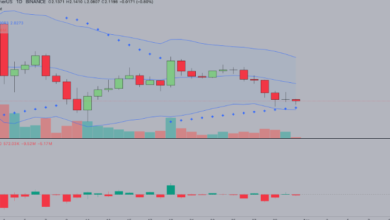How to Forecast Hiring Needs Based on Business Growth

Table of Contents:
- Understanding Workforce Forecasting in High-Growth Environments
- Laying the Groundwork with Historical Data
- Essential Metrics for Hiring Forecasts
- Frameworks and Techniques for Predicting Talent Demand
- Collaboration and Communication in the Forecasting Process
- Proactive Steps for Accurate Hiring Projections
- Continuous Improvement and Industry Benchmarks
- Maintaining Flexibility in Workforce Planning
- Conclusion
Understanding Workforce Forecasting in High-Growth Environments
As organizations scale, accurately forecasting hiring needs becomes a cornerstone for sustainable growth. The dynamic nature of business expansion demands agility, especially when anticipating the right talent mix and volume. Implementing robust capacity models enables leaders to align workforce strategy with growth plans, optimizing resources while avoiding costly gaps or over-staffing. Thoughtfully constructed forecasts set the stage for smooth onboarding, improved productivity, and company-wide alignment during crucial growth stages.
Laying the Groundwork with Historical Data
The initial step in effective hiring projections is assessing historical data. Past hiring patterns, turnover rates, and project cycle trends help organizations identify what worked and what fell short during previous growth phases. Leaders should examine metrics like historical time-to-fill for positions, seasonal spikes in hiring, and the impact of new initiatives on headcount. An accurate rearview perspective uncovers bottlenecks, highlights success factors, and forms a realistic foundation for modeling future workforce needs.
Essential Metrics for Hiring Forecasts
Metrics transform guesswork into strategy. Commonly used indicators include employee productivity, anticipated attrition rates, new business wins, and projected revenue changes. Organizations create detailed headcount maps that reflect growth pace and shifting business priorities by pairing these with coefficients like workload per role and departmental efficiency. Clearly defining these measures ensures that forecasts are quantitative and actionable, supporting budget allocation and maintaining momentum.
Read more: The Rise of Virtual Paralegal Services in High-Conflict Family Law Cases
Frameworks and Techniques for Predicting Talent Demand
Many organizations use spreadsheets to map projected workloads against hiring capacity to bring discipline to the forecasting process. Others invest in dedicated workforce planning software or agile tools for live tracking. Organizations embracing scenario-based planning, as described in this CIO capacity planning article, explore multiple growth outcomes and translate them into concrete hiring actions. The best frameworks allow for adjustments as new data arrives, weaving adaptability into the fabric of team-building efforts.
Collaboration and Communication in the Forecasting Process
It is essential to involve stakeholders throughout the hiring forecast process. Input from department heads, human resources, and finance connects business objectives to real-world needs. Transparent collaboration helps teams communicate evolving priorities, refine assumptions, and uncover resource blind spots. Regularly updating and presenting hiring forecasts builds trust, encourages engagement, and bridges the gap between executive vision and workforce reality.
Proactive Steps for Accurate Hiring Projections
Successful forecasting blends science with strategy. Begin by collecting historical staffing and project data. Next, select a forecasting framework that aligns with business complexity and team expertise. Invite open feedback from key departments, ensuring that planned actions reflect both operational goals and human insights. Periodically compare forecasted hiring needs against actual outcomes and adjust based on organizational learning. Embedding this cycle into regular business rhythms protects against missteps and supports scalability.
Continuous Improvement and Industry Benchmarks
High-growth organizations constantly refine their hiring strategies by benchmarking performance against industry standards. Insights from resources such as Harvard Business Review’s team management advice encourage using data-driven analysis and regular recalibration of recruitment models. Comparing results with similar companies helps teams identify emerging best practices and avoid stagnation, keeping talent acquisition strategies sharp and competitive.
Maintaining Flexibility in Workforce Planning
Flexibility underpins every effective workforce forecast. Business growth is rarely linear; unforeseen opportunities and obstacles arise frequently. Teams that revisit hiring models often respond faster to market changes and adapt more smoothly to fluctuations in talent needs. Treating hiring projections as living documents infuses agility into workforce management—an indispensable quality in unpredictable economic environments.
Conclusion
Tying hiring forecasts to business growth requires rigorous analysis, stakeholder engagement, and an adaptable mindset. Anchored in historical data and bolstered by advanced frameworks, these forecasts empower organizations to scale confidently, capture new opportunities, and avoid costly hiring missteps. Ongoing improvement and synergy between people and strategy transform workforce planning into a true growth catalyst for the modern enterprise.



